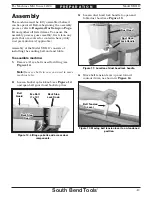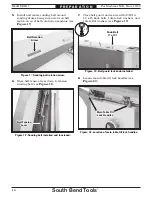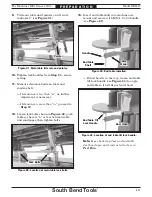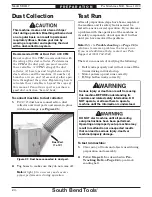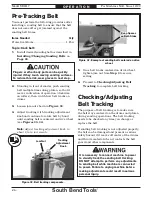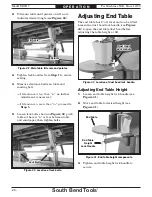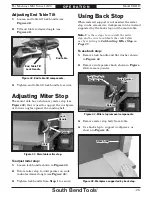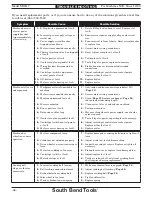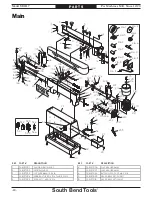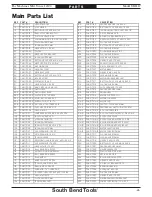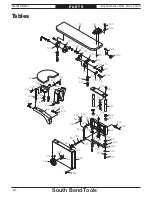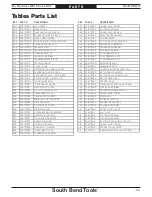
-30-
For Machines Mfd. Since 12/20
South Bend Tools
Model SB1117
O P E R A T I O N
Figure
Figure 48. Typical end sanding operation.
. Typical end sanding operation.
If you must feed workpiece into sanding belt
corner first, feed trailing corner first. Feeding
leading corner first could cause sanding belt
to grab workpiece and jerk it out of your
hands.
Edge & End Sanding
Proper use of the oscillating edge sander will
yield excellent sanding results due to the
oscillating movement. Always use the miter stop
to support the workpiece whenever possible.
Edge and end sanding operations are performed
on the main table against the platen.
To edge or end sand:
1.
Connect machine to power, turn it ON, and
allow it to reach full speed.
2.
Raise main table to desired height and
adjust table tilt to desired setting (refer to
Adjusting Main Table on Page 27).
3.
Support workpiece against miter stop and
slowly feed workpiece into moving belt with
light, even pressure. Maintain control of
workpiece, as shown in Figures 47–48. DO
NOT force workpiece against belt.
Figure
Figure 47. Typical edge sanding operation.
. Typical edge sanding operation.
Moving sanding belt can cause serious
personal injury if it comes in contact with
fingers, hands, or other body parts. Make sure
workpiece is always supported against table.
Use extreme care to provide a safe distance
between belt and any part of your body.
Note
: Loosen back stop lock knob and open
back stop door to reveal hidden back stop for
larger workpieces (see Figure 46).
Figure
Figure 46. Hidden back stop components.
. Hidden back stop components.
Back Stop
Back Stop
Lock Knob
Lock Knob
Hidden
Hidden
Back Stop
Back Stop
Содержание SB1117
Страница 48: ...southbendtools com Printed In Taiwan CS21567...


